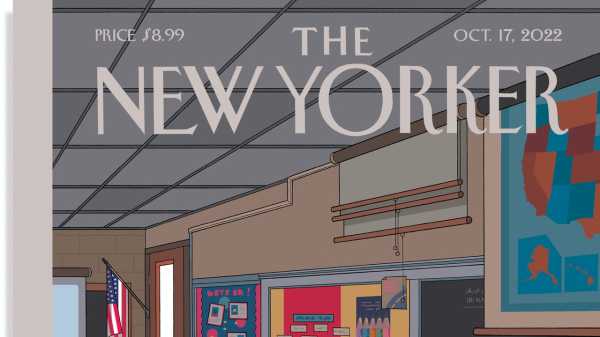
Over the years, in numerous covers for this magazine, the artist Chris Ware has drawn inspiration again and again from his experiences raising his daughter, Clara, and from his wife, Marnie, and her job as a teacher. He has caught moments that feel bittersweet, humorous, sad, and joyful. In his latest, for the October 17, 2022, issue, Ware turns his gaze to the ongoing tragedy of gun violence in schools, which has forced students, teachers, and parents to accept active-shooter drills as a routine part of the school year. The issue publishes, by unhappy coincidence, the week after a former policeman armed with a knife and gun killed thirty-six at a child-care center in Thailand, and it features a series of photographs of children waiting for the school bus in Uvalde, Texas, by Greg Miller. Miller captured the images just three months after a gunman with a semi-automatic rifle killed nineteen students and two teachers at Robb Elementary. In the accompanying introduction, one parent tells the reporter Rachel Monroe, “I spent the whole summer contemplating whether I send them back or not.” She adds, “The nightmare is, what if they don’t come back?” I recently spoke to Ware about the image, which he has left intentionally ambiguous; it could depict a practice run, or the real thing.
Your wife is a teacher. Is this why you’ve made schools the topic of a number of your covers?
Yes. Marnie has been teaching science to juniors and seniors in the Chicago Public Schools for two decades. My daughter has been a student for almost as long, and so she’s a regular inspiration for ideas, too. I’ve found that I can only draw convincing images that concern situations I’ve either directly experienced or are a notch or two removed from my daily reality. My back-to-school cover from September, 2012, pictured a real moment: Clara, then in elementary school, looking back at me as I left her at school. I drew an inversion of that idea the following December after the school shooting in Newtown, Connecticut.
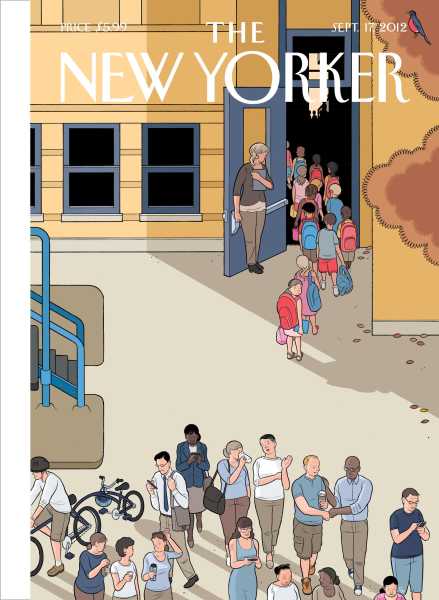
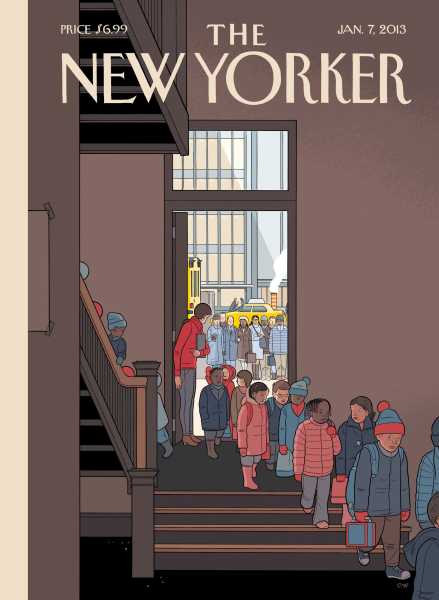
Did any event directly prompt the new cover image?
After the shootings in Newtown, Clara, like many children across America, would come home from school and report that her class had locked down again for a safety drill. These exercises were ostensibly to rehearse students for the possibility of a real shooting. My wife—again, a teacher herself—and I would offer her an understanding look, but, frankly, I gave shamefully little thought to what they both regularly faced, how lockdowns worked, or how the protocols might solve the basic math problem of automatic weapons plus classrooms. These were unthinkable topics, grayed out in my mind. Some clarity was provided on January 6, 2021, when Clara and I watched the rioters scale the walls of the United States Capitol while senators and representatives huddled in fear. At the time, she shared a sentiment apparently proliferating among her peers on TikTok and Twitter: “I’m just really glad that the congressmen who voted to let guns multiply in America are now going through what my generation has for pretty much our whole lives.”
This April, Clara, now seventeen and a senior, came home and said, “Somebody brought a gun to school today, but the police stopped him before he got inside.” A shiver spread across my neck and back. I asked if the school had gone into lockdown. She said no, adding that the students hadn’t even been notified of the event until school had been let out, several hours later. She and many of the students (and parents) were more than a little angry that regular security procedures hadn’t been followed, particularly since they had all spent years preparing for just such a moment. (The police, in a statement, reported that they had been tipped off that a student had gone home and was going to return with a firearm. They stopped him shortly before he entered school property and school officials cancelled plans for a lockdown, considering the premises “safe.”)
Then Clara finally described a lockdown for me. It usually involves the teacher turning off all the lights and lining the students up against the wall farthest from the door. Then the teacher sits down closest to the door, acting as a human shield. Perhaps this was the scenario experienced by the children who died in the shootings in Parkland and Santa Fe.
Pausing for a moment in her explanation, Clara said she suddenly realized the police had apprehended the student during her passing period. “Why does that matter?” I asked. “Because,” she said, “if there had been a real lockdown with a shooter in the building, they would’ve locked the doors to all the classrooms, and I and any other kids who hadn’t been in a classroom would’ve been stuck out in the hallway. We couldn’t have gotten back in.”
For more covers about schools, see below:
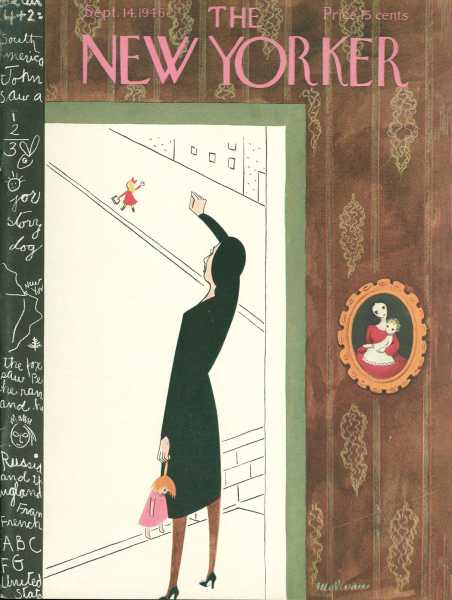
“September 14, 1946,” by Christina Malman
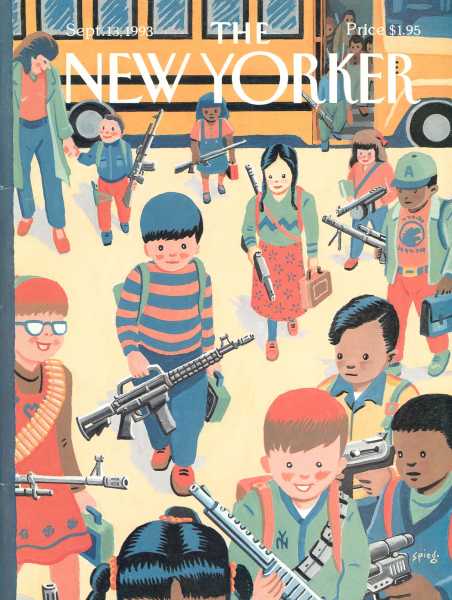
“The Guns of September,” by Art Spiegelman
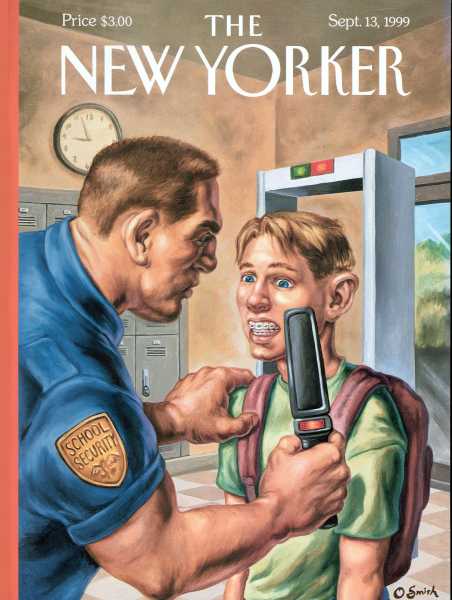
“Brace Yourself,” by Owen Smith
Find Chris Wares’s covers, cartoons, and more at the Condé Nast Store.
Sourse: newyorker.com






